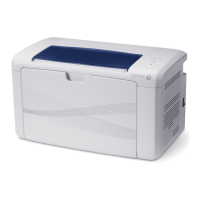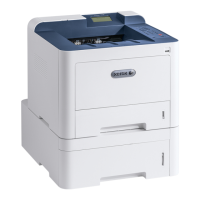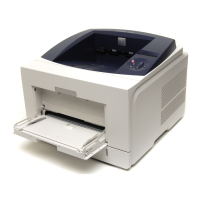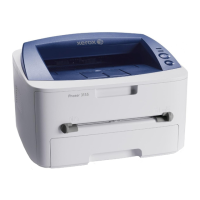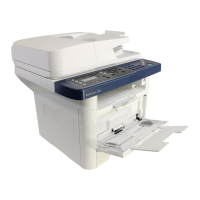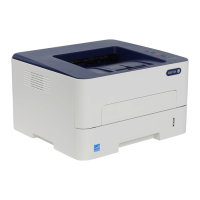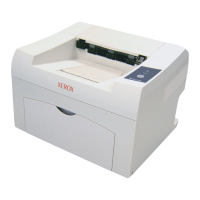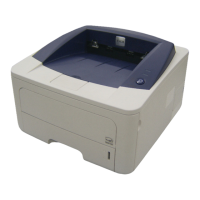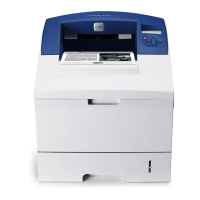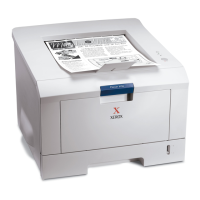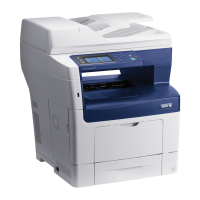Theory of Operation
Phaser® 3500 Laser Printer Service Manual
8-2
Overview of the Phaser 3500 Laser Printer
Summary of the Printing Process
The Phaser 3500 Laser Printer is a desktop monochrome laser printer, applying the principals
of an electrophotographic system.
The printing process is composed of the following:
Charging: The charge roller is negatively charged at approximately -1400 VDC by the high
voltage power supply (HVPS). The charge roller is kept in contact with the drum surface to
provide a uniform negative charge of approximately -800 VDC on the drum surface as it
rotates at a constant speed.
Exposure: The laser unit emits laser beams in response to image data from the Main board.
The laser beams are directed onto the drum surface through a system of mirrors and lenses. A
rotating polygonal mirror causes the laser beams to scan the drum surface from end to end
(axially) as it rotates. The beams are turned on to print a pixel and off when no printing is
required. The negative charge on the drum surface is reduced to approximately -250 VDC at
each point where the energized laser beam strikes, to form an invisible electrostatic latent
image on the drum surface.
Development: Negatively charged toner particles from the toner hopper are applied to the
supply roller and are then applied to the developer roller in a even layer controlled by the
metering blade. The developer roller turns against the drum and the toner particles are attracted
to the relatively positive latent image. The toner forms a visible image on the drum surface.
Pre-Clean: The pre-transfer lamp exposes the developed suface of the drum lowering the
surface potential and thereby providing enhanced transfer efficiency.
Transfer: The finished toner image on the drum is transferred onto the print media using the
voltage supplied by the transfer roller. The conductive transfer roller receives a high positive
voltage (approximately +1000 VDC) from the HVPS that puts it at a higher potential than the
drum. Since the transfer roller is located behind the print media, the toner image is attracted to
the high potential and deposits on the surface of the print media.
Fixing: The finished toner image is impermanent and easily smeared. To fix the image, the
print media goes through the Fuser where it passes between a pressure roller and the heat
roller. The toner is fused onto the print media by the combination of heat and pressure.
The heat roller is heated by a heat element. The roller surface temperature is detected by a
Thermistor. The information is fed back to the heater control to maintain a surface temperature
of 185º C during printing and 145º C during standby. If the thermostats detect a Fuser overheat
condition, it disconnects AC power to the Fuser.
Cleaning: After the image is transferred to the print media, a cleaning blade inside the
cartridge removes any remaining toner particles from the drum.
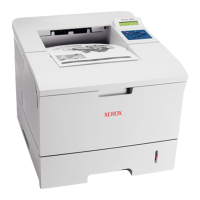
